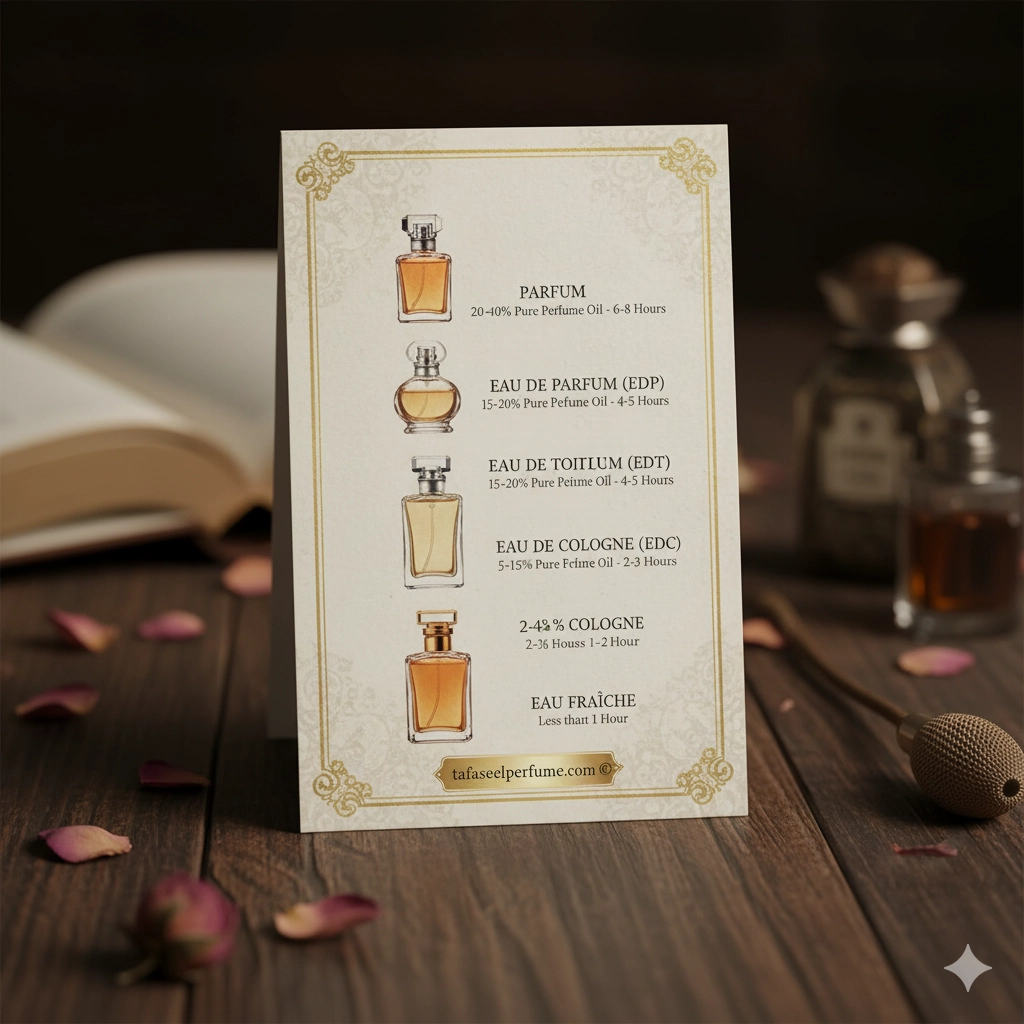- Understanding the Perfume Strengths Chart: Which Concentration Suits You Best?: Perfume strengths chart is an essential guide for fragrance lovers who want to understand the differences between various perfume concentrations such as Eau de Parfum, Eau de Toilette, and Cologne. Knowing these distinctions helps you choose the perfect scent intensity, longevity, and projection that fits your lifestyle and personality.
Perfumes are not all created equal. The difference lies in the concentration of aromatic oils, which affects how long the scent lasts and how powerful it smells. This comprehensive guide will break down each type, helping you make a more informed and confident choice. Whether you’re a fan of Paco Rabanne Invictus or prefer the soft tones of Ariana Grande Fragrance, understanding perfume strengths will elevate your fragrance experience.
Table of Contents
What Does Perfume Strength Mean? – Learn how fragrance concentrations determine scent longevity and intensity.
The Main Categories in the Perfume Strengths Chart – Discover the differences between Parfum, Eau de Parfum, Eau de Toilette, and more.
How to Choose the Right Perfume Strength – Find out which strength fits your lifestyle and personality.
Common Mistakes When Reading the Perfume Strengths Chart – Avoid misunderstandings when shopping for new fragrances.
Final Thoughts on the Art of Fragrance Strengths – Learn why understanding strength is key to fragrance mastery.
What Does Perfume Strength Mean?
Perfume strength refers to the percentage of essential oils mixed into alcohol and water to create a fragrance. The higher the concentration of aromatic oils, the longer the scent lingers on the skin. For example, pure Parfum can last up to 12 hours or more, while lighter forms such as Eau de Cologne may fade within 2 to 3 hours. Understanding this allows fragrance enthusiasts to select the ideal scent for various occasions, from daily wear to special nights out.
Some perfumes, such as La Perla Let The Dance Begin, are crafted with rich, long-lasting ingredients, while others, like Cool Water Eau de Toilette Davidoff, emphasize freshness and subtlety. Each concentration offers a different sensory journey.
The Main Categories in the Perfume Strengths Chart
The perfume strengths chart typically includes five major categories:
1. Parfum (Extrait de Parfum): Contains 20–40% aromatic compounds, providing deep and long-lasting fragrance with minimal alcohol. Ideal for evening wear or luxury experiences.
2. Eau de Parfum (EDP): With 15–20% concentration, it offers excellent longevity and projection, balancing richness and wearability. Famous examples include Vetiver Paradise Carolina Herrera.
3. Eau de Toilette (EDT): Around 5–15% concentration. Lighter and fresher, perfect for daily use. Many bestsellers, such as Valentino Born In Roma Men EDT, belong to this category.
4. Eau de Cologne (EDC): Usually 2–5% concentration. It’s refreshing and short-lived, ideal for summer days or quick touch-ups.
5. Eau Fraîche: The lightest version, offering subtle freshness with very low oil concentration, perfect for sensitive skin.
How to Choose the Right Perfume Strength
Choosing the right perfume strength depends on factors like climate, occasion, and personal preference. In warmer climates, lighter fragrances such as Eau de Cologne or Eau de Toilette perform best, while in colder weather, stronger formulas like Parfum provide warmth and longevity. For example, if you love powerful nighttime scents, Ultra Male Jean Paul Gaultier 125ml delivers intensity and sensual depth. Meanwhile, day-to-day wear might call for something like Michael Bublé Perfume Rose Gold, which offers elegance without overwhelming strength.
Pro Tip: Try testing perfumes on your skin before purchasing. The same scent can perform differently depending on body chemistry, making it essential to test before committing.

Common Mistakes When Reading the Perfume Strengths Chart
Many buyers mistakenly assume that higher concentration always means “better.” However, the right choice depends on your lifestyle. An Eau de Parfum might be too intense for office use but perfect for romantic evenings. Another mistake is confusing longevity with quality—some lighter fragrances, like Sexy Perfumes, are designed to project gently and refresh throughout the day, rather than last endlessly.
Understanding the nuances of the perfume strengths chart prevents overspending and ensures a better match with your desired scent experience.
Final Thoughts on the Art of Fragrance Strengths
Mastering the perfume strengths chart transforms your relationship with scent. Once you understand concentration levels, you can build a wardrobe of fragrances suited for every moment—light for daytime freshness, intense for nights of elegance. Brands like Paco Rabanne and Dirt Fragrance Oil show how diversity in concentration brings creativity to modern perfumery.
Conclusion: Whether you’re exploring Unisex Perfume or luxurious Perfume Gift Sets, understanding the perfume strengths chart ensures your fragrance journey is rich, refined, and uniquely yours. The next time you pick up a bottle, you’ll know exactly why it smells—and lasts—the way it does.
